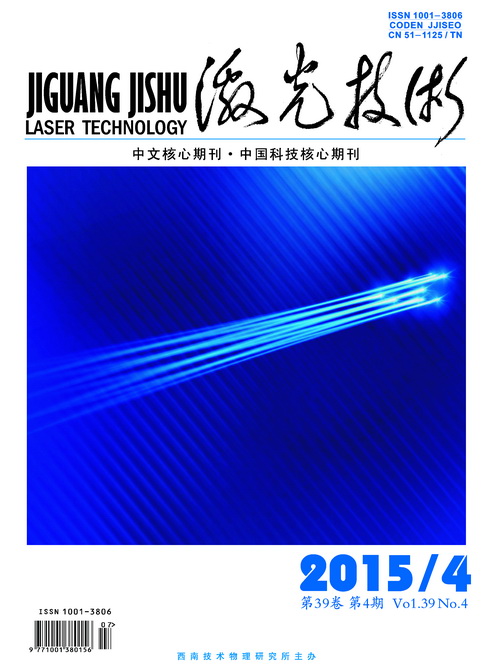Simulation of pulse TEA CO2 laser output
-
1.
National Engineering Research Center of Laser Processing, School of Optical and Electronic Information, Huazhong University of Science and Technology, Wuhan 430074, China
-
Corresponding author:
WANG Youqing, yqwang@163.com
;
-
Received Date:
2014-06-10
Accepted Date:
2014-07-25
-
Abstract
In order to study effect of gas ratio, pumping electron density and cavity length on output power of pulse transversely excited atmospheric(TEA)CO2 laser, six temperature models were employed to analyze the energy transfer among different molecular vibration modes of working gas and the output power of laser by theoretical analysis and numerical simulation. The simulation was in good agreement with the experimental data. The results show that when the volume ratio of CO2, N2, and He rises from 4:30:65 to 6:30:65, the pulse power increases and the delay time gets shorter. When the volume ratio of CO2, N2, and He rises from 5:15:65 to 5:35:65, the pulse power firstly increases and then decreases, and reaches the maximum at the volume ratio of N2 about 25. When the volume ratio of CO2, N2, and He is 5:30:65, the maximum pumping electron density rises from 41012/cm3 to 61012/cm3, and the cavity length rises from 2m to 4m, the pulse power will gradually increase. The pulse power is greater, the delay time is shorter, and the tailing phenomenon is more longer. The simulation results show that gas ratio, pumping electron density and cavity length have effects on pulse output power. The study provides a reference for design and optimization of CO2 lasers.
-

-
References
|
[1]
|
RUDOLPH R, HARENDT A, BISIN P, et al. Numerical modelling of fast flow CO2 lasers.Ⅰ: the model [J]. Journal of Physics,1993, D26(4):552-559. |
|
[2]
|
SMITH K, THOMSON R M. Computer modeling of gas laser[M]. New York,USA:Plenum Press, 1978: 1-87. |
|
[3]
|
LU Y Z, WANG X B, DONG J, et al. Pulse characteristics of a dual wavelength tunable TEA CO2 laser[J]. Laser Technology, 2010, 34(1):88-90 (in Chinese). |
|
[4]
|
DING C L, WAN C Y. Multifrequency dynamical model of pulsed CO2 lasers[J]. Acta Physica Sinica, 2006, 55(3):1165-1170 (in Chinese). |
|
[5]
|
TIAN Z S, WANG Q, WANG Y S. Kinetic modeling of electroopitcally Q-switched CO2 laser[J]. Optical and Quantum Electronics, 2002, 34(2):331-341. |
|
[6]
|
JELANI S, SAEEDI H. Numerical investigation of a fast axial flow CW CO2 laser[J]. Optics Laser Technology, 2008, 40(3):459-465. |
|
[7]
|
KOUHKI A M, JELANI S, SILAKHORI K, et al. Kinetic modeling of a pulsed CO2 laser[J]. Lasers Engineering, 2011, 21(5):265-280. |
|
[8]
|
TOEBART D, MUYS P, DESOPPERE E. Theoretical study of the properties of a modulated fast flow CO2 laser[J].Infrared Physics Technology, 1997, 38(6):337-355. |
|
[9]
|
SOUKIEH M, GHANI B A, HAMMADI M. Mathematical modeling of CO2 TEA laser[J]. Optics Laser Technology, 1998, 30(8):451-457. |
|
[10]
|
DING C L. Theoretical study of the dynamics of multi frequency pulse CO2 laser [D]. Beijing: Graduate University of Chinese Academy of Sciences, 2006:17-37(in Chinese). |
|
[11]
|
LI H. Numerical analysis[M].Wuhan: Huazhong University of Science and Technology Press, 2010:125-142 (in Chinese) . |
-
-
Proportional views

-

 Map
Map



 DownLoad:
DownLoad: